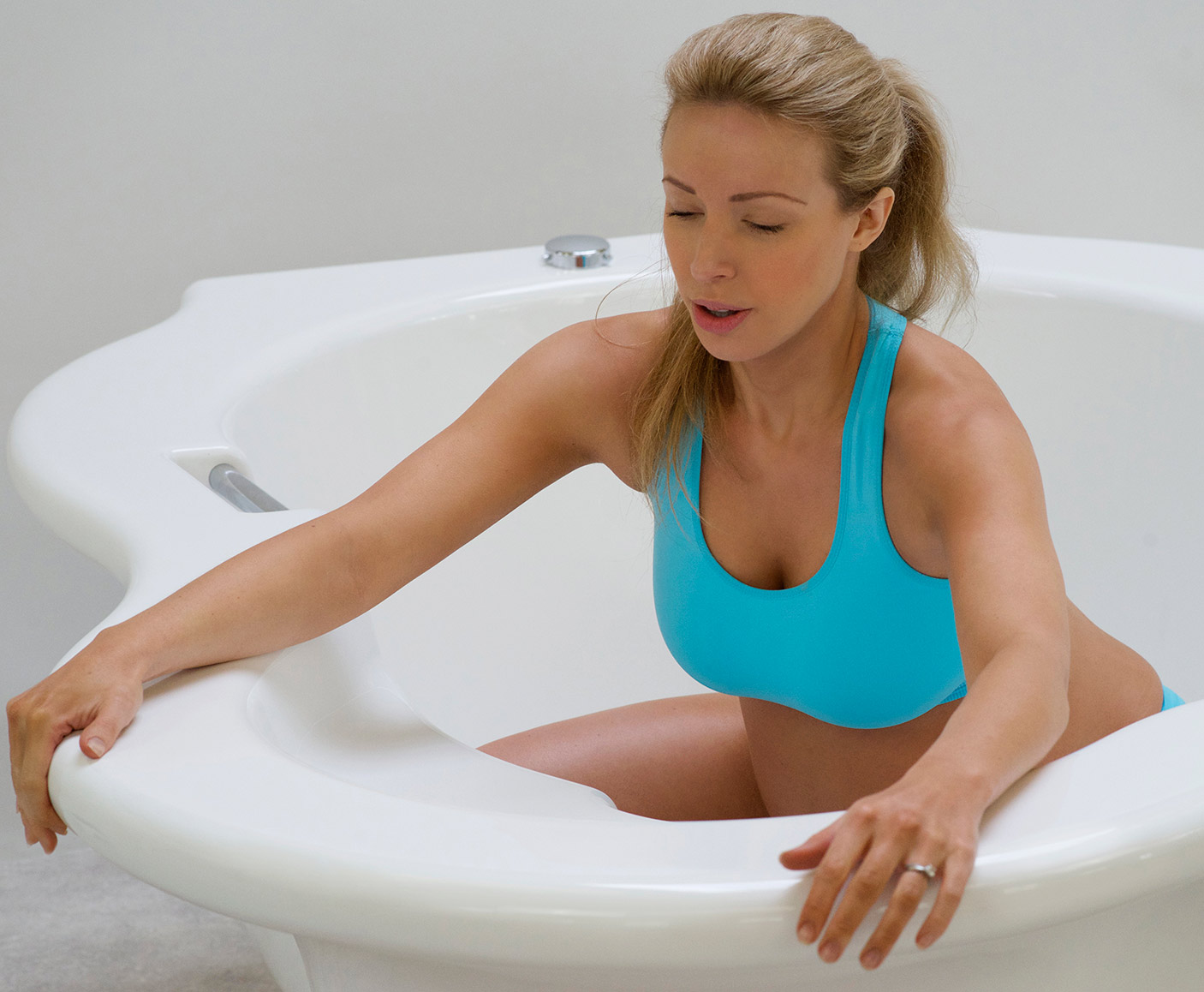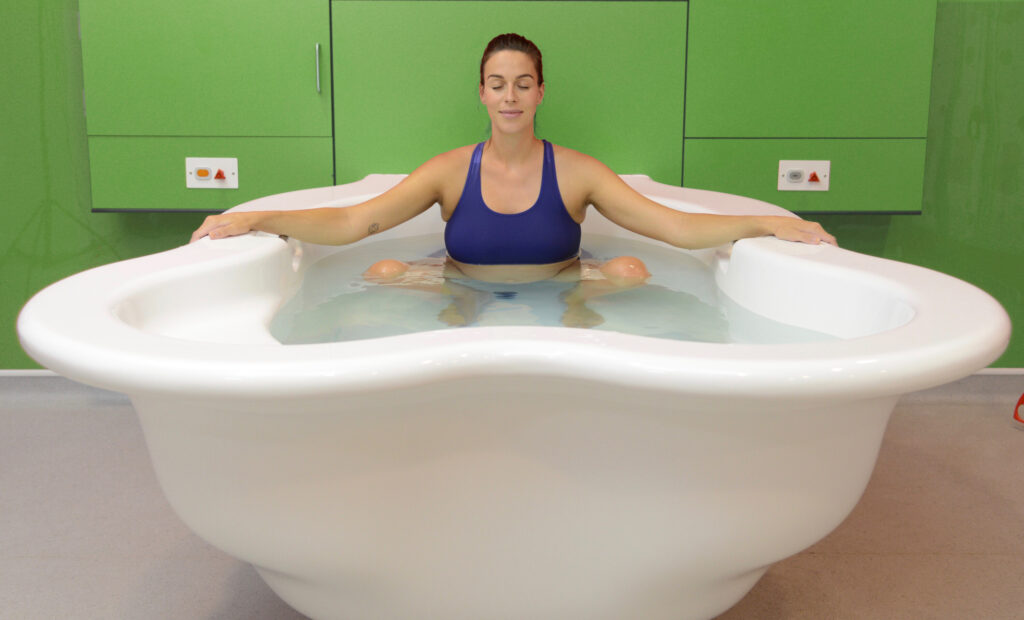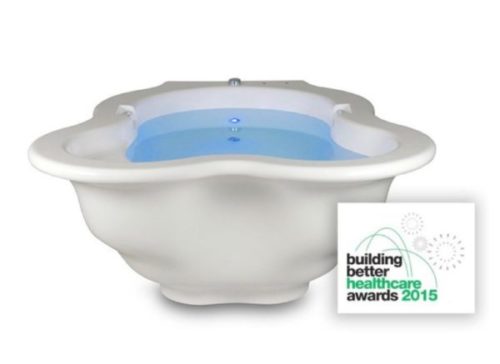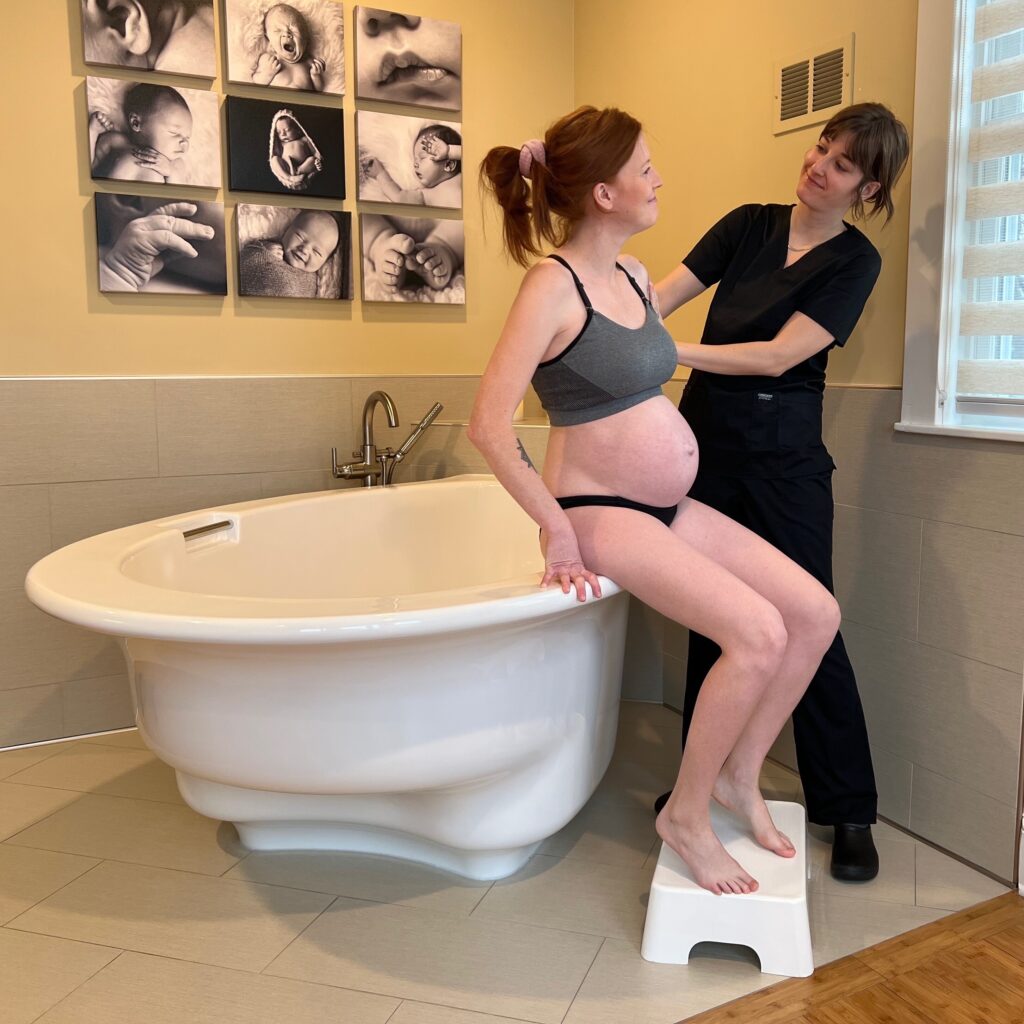Bridge to Health – Sian Smith
When considering their birth plan, more and more women are choosing to include the use of water at some stage.
In fact, around 30% of women now plan to use this method either for birthing their baby or as a natural way to reduce some of the intense sensations (pain!) associated with labour.
Here are some of the reasons why:

Water is relaxing!
Being able to bob around in a large pool of warm water is the perfect environment to help you stay calm and relaxed, in a situation most would normally consider pretty stressful.
For many, sliding into a warm bath is the ‘go to’ choice of relaxation after a hard day, so what better way to help you through one of the most physically demanding and memorable experiences of your life?
Additionally, a calmer birth may be less stressful for your baby, as moving from an environment of warm amniotic fluid to one of warm water is a gentle way of introducing them to their new surroundings.

Water is a natural pain reliever
The relaxing effects of water help encourage the body to produce its own pain-fighting substances.
This is beneficial both for Mum and baby; for Mum staying relaxed helps stimulate her natural production of oxytocin (the’ love hormone’ that helps the uterus contract) and endorphins, the ‘feelgood’ hormones that help work as a natural pain reliever.
For baby, a happy and relaxed Mum is more likely to birth quickly with a reduced need for medical intervention.

It reduces stress and anxiety
It is not just the water that helps to relax you. With a waterbirth, often the entire surroundings are altered to create a calming ambience e.g. dimmed lights and hushed voices.
This enables you to go into your own world much more easily than if in a harshly lit room with strange people popping in and out.
Additionally, this type of relaxation helps encourage deep abdominal breathing, preventing you from becoming tense which may make contractions feel more intense.

It reduces the risk of perineal tearing
The warmth of the water helps to promote increased blood flow to the vagina and perineum (the area between the vagina and anus that is susceptible to tearing during childbirth).
This increases flexibility of the tissues and can reduce the likelihood of tearing when birthing the baby’s head.

It allows you to adopt a more ‘active’ birth position
A reason that some women choose a water birth is that it allows you to retain some control throughout the labour process –being aware of the contractions and sensations your body is experiencing, with a reduced chance of medical intervention.
Additionally, the sensation of ‘weightlessness’ that being in the water provides, enables you to move around much more freely than your body has allowed you to for a while!
You are free to adopt almost any position that feels comfortable for you.
The classic image of a labouring woman is that of her laying on her back with her legs in stirrups.
Whilst this is the case for many, it is actually a fairly difficult way to birth your baby as you have to work against gravity to push the baby’s head UP and over the lowest part of the spine – the coccyx.
The best way to counteract this is to work with gravity and adopt a more ‘active’ squatting or modified squatting position.
Being in the water allows you to stay in these positions for longer, as you can lean against the side of the birthing pool for support.
Remaining fit, healthy and active will also help you have as smooth a pregnancy as possible.
Your Osteopath can advise you on exercises that are suitable throughout pregnancy, specifically core, pelvic and lower limb strengthening exercises that will help you be able to adopt active birth positions and use the correct muscles to birth your baby as efficiently as possible.

It is safe!
Of course, water births are not suitable for everyone – the main criteria is that Mum and baby must be healthy, the baby must be in a head-down position, and the pregnancy must be between 37 and 42 weeks.
But as the majority of pregnancies are healthy, a water birth can offer a natural and more in control option to the labour choices a woman has.
And finally, one of the most frequently asked questions regarding waterbirths appears to be ‘will my baby drown underwater?’… to which the answer is no!
The baby receives all of its oxygen via the placenta and hormones circulating through the baby ensure this occurs until the baby is lifted out of the water.
It is also known as the ‘foetal dive reflex’ and allows babies to be underwater for short periods of time up until around 6 months old.









